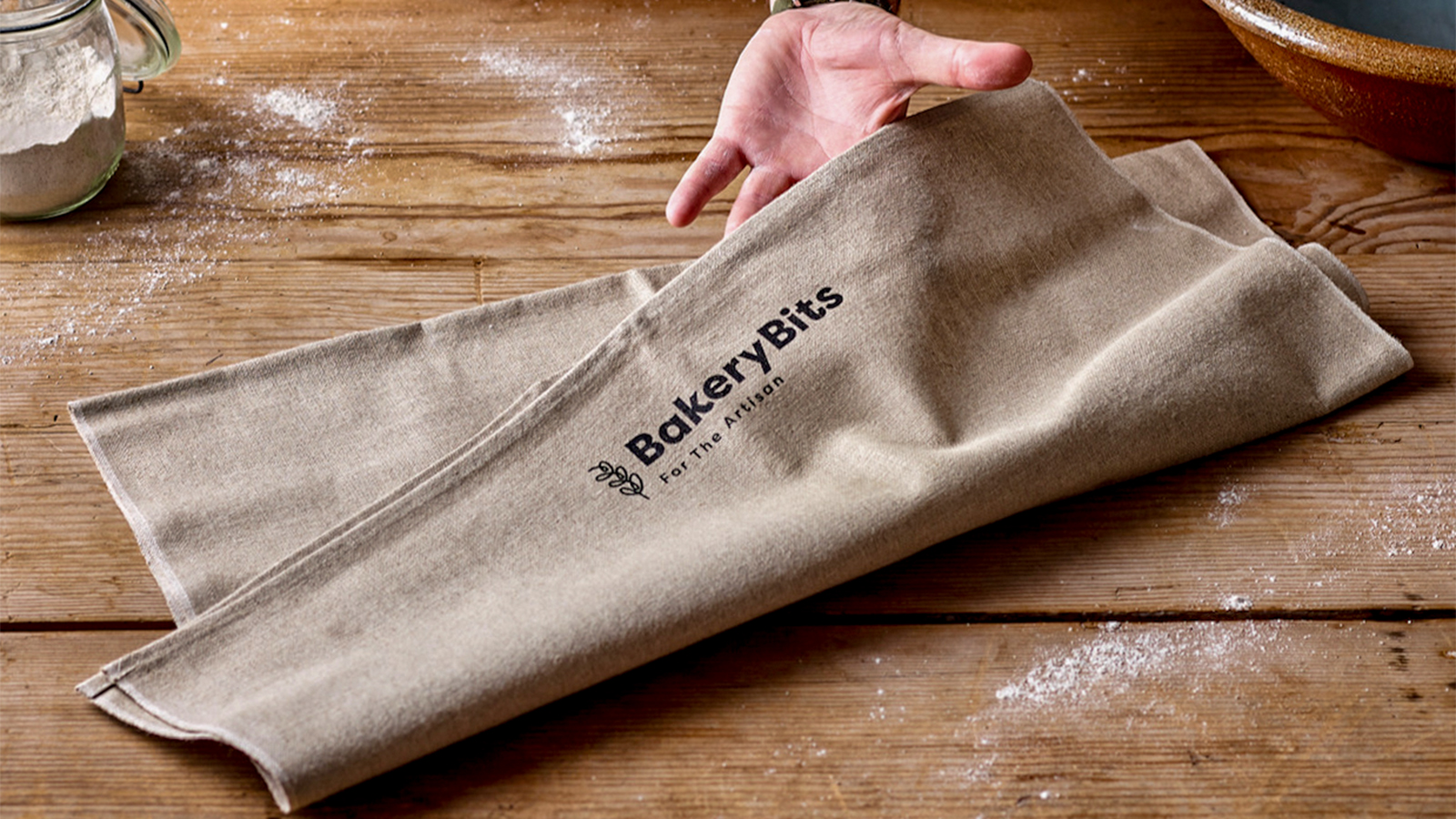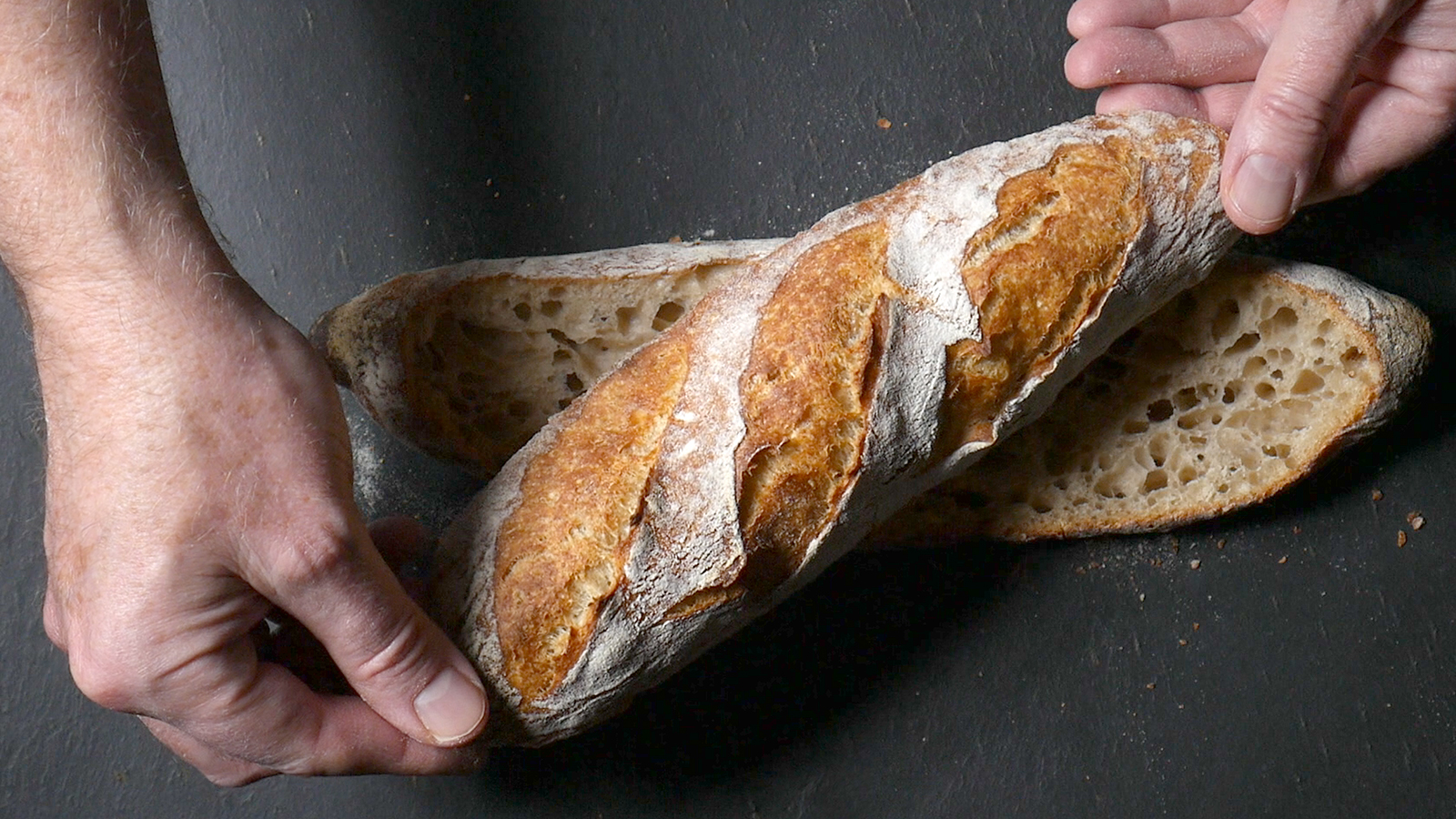BakeryBits is the UK's leading online stockist of couche linen.
Many of you have bought it already and we’re very happy that you like it so much. But there will be some of you who have no idea what it is, how it can improve your bread baking, and why so many bakers consider it essential. So here is a guide to buying and caring for your couche linen cloths.
Check out our full couche linen range here
Q: What is couche linen?
“Couche” – pronounced “koo-sh” – is a French word meaning a kind of holder, bed or layer. And even a baby’s nappy is sometimes called a couche in French: one fun fact, Google translates boulangerie-couches as “bakery-diapers”. But typically, in baking, a couche refers to a layer of very thick linen that holds the dough neatly and forces it to rise upwards within folds in the cloth, or as a lining in a basket – as it’s important to avoid the dough sagging outward and producing a flattish baguette. Though you can use a couche to hold the dough for almost any loaf, they’re typically used for baguettes. The were popularised in France by Viennese bakers in the late 1700s who brought with them techniques for mixing and baking baguettes (and other shapes known as "Vienna Breads") that utilised a softer dough and needed support on linen cloths while rising.
Q: Why linen, and not cotton?
Linen is woven with long flat flax fibres that won’t burr with use like cotton will. This means that with regular use and flouring the linen becomes non-stick, where cotton fibres will stick to the dough. Only linen achieves a non-stick effect with use. Cotton also softens with use, definitely a bad thing in a couche cloth, whereas linen will always stay sturdy even after washing.
Q: How do I prepare a couche for first use?
Before your first use, our resident baker Dan Lepard says to rub the surface where your bread dough will sit with rye flour, not wheat flour, and give it a visible coating. “You don’t have to rub it in from edge to edge, most bakers leave a margin of 5cm un-floured at the edges, says Dan, “but for the first few uses rub it each time with rye flour to build up a smooth floured surface on the linen. It doesn’t need to be washed first time, and some bakers avoid ever washing it. If it feels damp you should shake it out, and hang it over a clothes horse until it dries. It can be washed but it does shrink and crumple, affecting its look more than its usability.”
Q: How can I identify good quality linen?
Our BakeryBits linen has a gentle grey-oat colour, and this is typical for unbleached natural linen. This is the quality we recommend. Some companies will try to sell bleached, cream-coloured fabric as bakery linen, but to our knowledge it’s often not the real thing. Go for darker linen always, as it’s usually the best quality for baking. Our couche linen is sourced from France where it’s been made since the early 1600s. Another fun fact: The quality of French linen has long been so highly prized that in 1745, the British parliament went as far as banning it from being worn or imported in order to protect local manufacturers. Thankfully that law has bitten the dust, and we’re free to sell this extraordinary linen to you at BakeryBits.
Q: What else will I need?
Good question. A great baguette flour like our Foricher T65 is perfect, or Dan Lepard recommends combining Foricher T80 with Marriage's Finest Strong White Bread flour for more flavour. A baguette flipping board is excellent, as well as rye flour for priming your new linen cloth.












